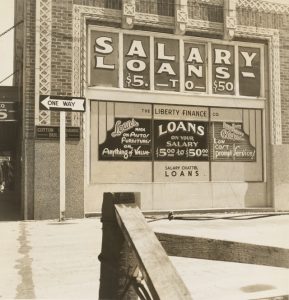When you are applying for a loan, any reputable lender will perform a risk assessment. Whether you are trying to get a mortgage, car loan, or personal loan, creditors need to have assurances of repayment. For this reason, they use the loan-to-net-worth ratio to offer some insight into applicants’ personal finances. It also helps determine your ability to repay the loan. If you want to be better prepared before reaching out to creditors, here is how you can calculate your loan-to-net-worth ratio yourself.
What Is Net Worth?
Before you even begin the application process, you need to sit down and calculate your net worth. This will likely be the most time consuming part. However, you want to have a firm grasp on your personal finances before you schedule any meetings with creditors or lending institutions. It will go more smoothly if you have reviewed your accounts and are aware of any potential risk factors.
Figuring out your net worth uses a very simple formula: subtract your total debts from your total assets. Your assets include anything you own that has value such as your home, real estate, investments, bank accounts, artwork, recreational vehicles and jewelry. Your debt is defined as anything that is owed including loans, credit card balances, back taxes and unpaid bills. After you take inventory of all your debts and assets, do the math and you will have your total net worth.
What Is Loan-to-Net-Worth Ratio?
The next formula you need to become familiar with is your loan-to-net-worth ratio. This calculation provides a statistical representation that allows creditors to easily and quickly assess loan applicants. The ratio is a measurement of how your loan debt leverages against your net worth. You take the amount you want to borrow and divide it by your total net worth. The lower your ratio, the better you look to creditors.
To more fully illustrate the loan-to-net-worth ratio, let’s use some hypothetical figures. Let’s say you want to borrow $10,000 and your total net worth is $100,000. When you divide these numbers, you are left with a 1-to-10 ratio, or 10%. This means that the prospective loan is 10% of your total net worth. Keep in mind that some lenders reverse the formula, in which case higher ratios are more desirable.
Why Does Loan-to-Net-Worth Ratio Matter to Creditors?
The reason lenders use the loan-to-net-worth ratio is to assess the risk of loan applicants. Their greatest concern is people defaulting on payments. So, they created a vetting process which includes both a credit check and the loan-to-net-worth ratio. If you have more total debt than assets, you are a higher risk and less likely to receive a loan.
To mitigate these risk factors, lenders may offer higher interest rates or request a co-signer. However, if the risk is too great, they will not approve your application. Creditors look at much more than just your credit score, history, and loan-to-net-worth ratio. It is also important to remember that different lenders may accept less desirable ratios. Even if your credit history is less than perfect, it is still possible to obtain a loan.
Read More
- 5 Best Tips to Get the Lowest Personal Loan Rates
- How to Increase Net Worth Starting Now
- How Lenders Assess Credit Worthiness
Jenny Smedra is an avid world traveler, ESL teacher, former archaeologist, and freelance writer. Choosing a life abroad had strengthened her commitment to finding ways to bring people together across language and cultural barriers. While most of her time is dedicated to either working with children, she also enjoys good friends, good food, and new adventures.

